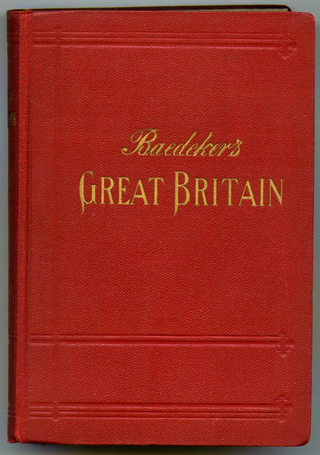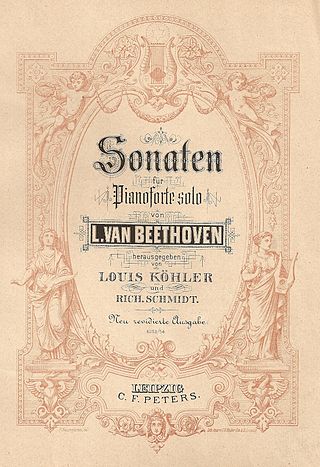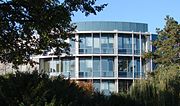
Verlag Karl Baedeker, founded by Karl Baedeker on 1 July 1827, is a German publisher and pioneer in the business of worldwide travel guides. The guides, often referred to simply as "Baedekers", contain, among other things, maps and introductions; information about routes and travel facilities; and descriptions of noteworthy buildings, sights, attractions and museums, written by specialists.
Holtzbrinck Publishing Group is a privately held German company headquartered in Stuttgart, that owns publishing companies worldwide. Through Macmillan Publishers, it is one of the Big Five English-language publishing companies.
Harcourt was an American publishing firm with a long history of publishing fiction and nonfiction for adults and children. The company was last based in San Diego, California, with editorial/sales/marketing/rights offices in New York City and Orlando, Florida, and was known at different stages in its history as Harcourt Brace, & Co. and Harcourt Brace Jovanovich. From 1919 to 1982, it was based in New York City.
St. Martin's Press is a book publisher headquartered in Manhattan in New York City. It is headquartered in the Equitable Building. St. Martin's Press is considered one of the largest English-language publishers, bringing to the public some 700 titles a year under six imprints.
Holt McDougal is an American publishing company, a division of Houghton Mifflin Harcourt, that specializes in textbooks for use in high schools.

Henry Holt and Company is an American book-publishing company based in New York City. One of the oldest publishers in the United States, it was founded in 1866 by Henry Holt and Frederick Leypoldt. The company publishes in the fields of American and international fiction, biography, history, politics, science, psychology, health, and children's literature. In the U.S., it operates under Macmillan Publishers.

Edition Peters is a classical music publisher founded in Leipzig, Germany in 1800.

Reclam Verlag is a German publishing house, established in Leipzig in 1828 by Anton Philipp Reclam (1807–1896). It is particularly well known for the "little yellow books" of its Universal-Bibliothek, simple paperback editions of literary classics for schools and universities.

Georg Otto Ledderhose was a German surgeon, professor and pioneering traumatologist.

Adolf von Donndorf was a German sculptor.

Südfriedhof is, with an area of 82 hectares, the largest cemetery in Leipzig. It is located in the south of Leipzig in the immediate vicinity of the Völkerschlachtdenkmal. The Südfriedhof is one of the largest rural cemeteries in Germany, along with the Ohlsdorf Cemetery in Hamburg and the Stahnsdorf South-Western Cemetery in Berlin.
Alfred Thieme was a German industrialist and art collector from Leipzig.

Mohr Siebeck Verlag is a long-established academic publisher focused on the humanities and social sciences and based in Tübingen, Germany. An independent publisher, it has remained in the same family over four generations.

Ulrich Thieme was a German art historian. He was the son of the industrialist and art collector Alfred Thieme (1830–1906), brother of the publisher Georg Thieme (1830–1906) and grandfather of the painter Peter Flinsch (1920–2010).

Georg Thieme was a German publisher, notable for founding the Georg Thieme Verlags in 1886 - it still operates as Thieme Medical Publishers. He was the son of the industrialist Alfred Thieme and elder brother of the art historian Ulrich Thieme.
As of 2018, ten firms in Germany rank among the world's biggest publishers of books in terms of revenue: C.H. Beck, Bertelsmann, Cornelsen Verlag, Haufe-Gruppe, Holtzbrinck Publishing Group, Ernst Klett Verlag, Springer Nature, Thieme, WEKA Holding, and Westermann Druck- und Verlagsgruppe. Overall, "Germany has some 2,000 publishing houses, and more than 90,000 titles reach the public each year, a production surpassed only by the United States." Unlike many other countries, "book publishing is not centered in a single city but is concentrated fairly evenly in Berlin, Hamburg, and the regional metropolises of Cologne, Frankfurt, Stuttgart, and Munich."

William Radde was a bookseller and publisher in New York City from 1837 to 1884. He published numerous books on homeopathic medicine. He was one of the founders of Hahnemann Hospital in New York City in 1869.

The Morgenblatt für gebildete Stände was a German cultural and literary journal that existed from 1807 to 1865. It appeared daily until 1851, when it was changed to a weekly journal. The Morgenblatt was published by Cotta in Tübingen and later in Stuttgart, and was the most important German literary and cultural journal of its time.
The Lindauer Psychotherapiewochen (LP) are specialist conferences primarily intended as further training for doctors, psychologists, and child and youth psychotherapists, especially in the field of psychodynamic psychotherapy. These conferences span one-week and have been held annually in April, in Lindau, since 1950. Since 1967, organization of the conference has been run by the Vereinigung für psychotherapeutische Fort- und Weiterbildung.
Gustav Kirstein was a German publisher, writer, and art collector of Jewish descent.













